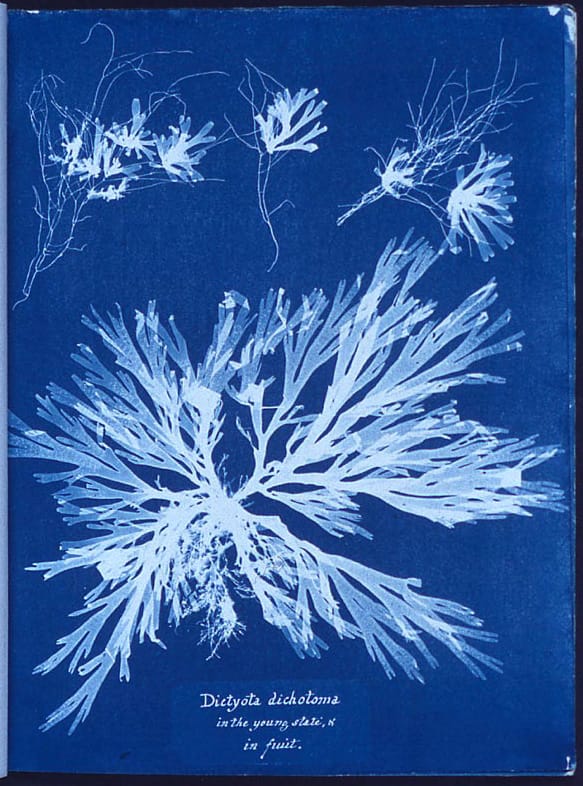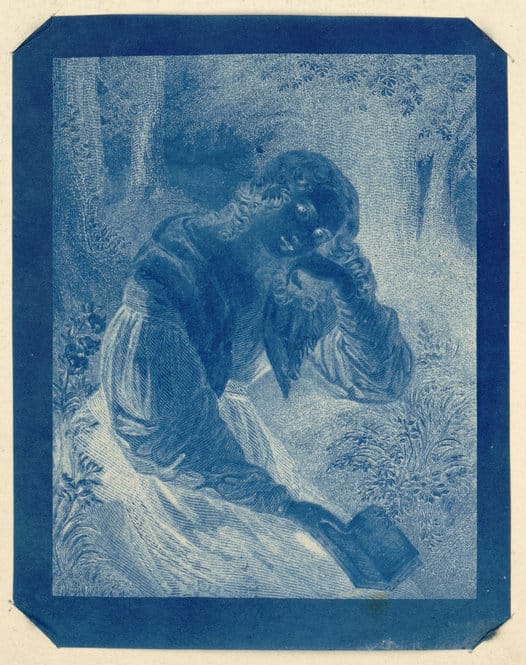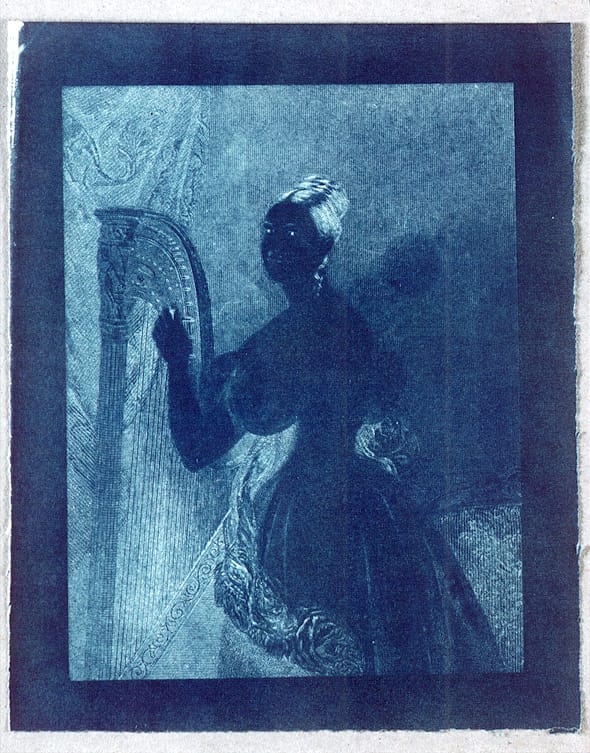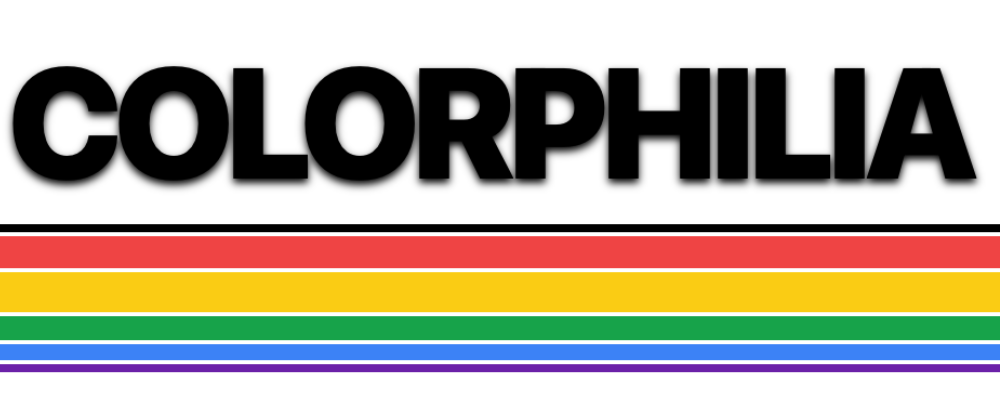50 Shades of Blue
Venus, the Renaissance, salty language, and the color blue.

Please note: You may want to skip today's newsletter if you prefer to abstain from coarse language or salacious topics.
I think that I have finally discovered why pornographic cinema and bawdy performances have been described as blue.
The simple answer is because of the Roman goddess Venus.
Art
It would not surprise the frequent reader of Colorphilia to learn that since the Renaissance, when European artists wished to depict a nude figure, they would choose a personality from either the Bible or Greco-Roman myth, and claim that they were simply depicting a historical figure.
There were some in the Church at the end of the 15th century who preferred that those figures be Biblical in origin. If it had been created a decade earlier, Michelangelo's 1504 David would have likely been Michelangelo's Adonis. To wit, his Bacchus was created more than 30 years earlier.
Similarly, a few weeks ago, I may have alluded to the fact that numerous artists chose to paint a tableau of Susannah and her leering accusers. This is one of the reasons why a relatively obscure apocryphal story was featured on so many occasions.
Casting Calls
It seems that artists and collectors alike would use names of the various Biblical and mythical characters to describe what sort of model they were seeking. In other words, an artist would likely ask for a "Deborah" when painting a scene with Deborah, a "Mary" when painting Mary, and a Venus or Susannah, when they wanted a model comfortable with varying states of undress.
But the archetypical featured would be of the goddess of adultery, the one whose name is linguistically related with venereal diseases: Venus. Depictions of the Roman goddess became so common, that the female nude began to be euphemistically referred to as a Venus. (No arms required.)
Many a legal scholar have noted that the difference between art and pornography is context.
By the late 19th century, the artist who did not have access to a human model could order visual aids to assist them in their artistic exploration of the female form. These pictures would also be described as Venuses.
But as was so common, the mere mention of her name became unnecessarily eroticized by the Philistines who assumed that individuals were ordering their visual aids for reasons other than portraiture practice.
Blue Photography
So, how did the nomenclature jump from Venus to blue?
In 1832, Louis Daguerre invented the photographic process and it was immediately put into service as a means of sexual arousal—the French postcard. British photographers attempted to counteract this trade imbalance. Ashbee reported that in 1874, the studio of an Englishman named Henry Hayler was raided, and 130,248 sexually explicit pictures and 5,000 pornographic slides were seized and destroyed by the London police.
– McConahay, "Pornography: The Symbolic Politics of Fantasy", Law and Contemporary Problems, (1988)
When I was researching photography I wrote a little about the choice of daguerreotype as opposed to photograph, or photogenic creation. I believe that the word cyanotype was similarly inspired by Venus.
A decade after Daguerre invented his process, noted astronomer Sir John Herschel, the son of the astronomer William Herschel (who discovered the planet Uranus), announced a discovery to the Royal Society, based on his experiments of using both organic and inorganic photosensitive materials to create photographs, the blue-hued cyanotypes. While his "cyanotypes" were not the predominant photography technique, they are the basis for the creation of the architectural blueprint.
A few years later, botanist Anna Atkins released a collection of beautiful floral and natural images using the theories proposed by Herschel.

Unlike Aktins, Herschel's photographic subjects were more human, and female. While I have not yet found any proof of actual Venuses within his oeuvre, some of the examples from the 1830s would lead one to assume that we don't necessarily have all of Herschel's photography. His photography is particularly terrestrial for an astronomer.
I would suggest that Sir Herschel was already aware of a blue-association with Venus at the time of his creation, and the word "cyanotype" is a pun on blue, not the source of the euphemism. His use of blue language as the name of the discovery was likely because he was continuing the long tradition of depicting the female form.
Please note that at the time of the first cyanotype below, titled "Still in My Teens", Herschel was 46. And as he wed his wife in 1829, the model was neither his wife nor one of his daughters.


The Hypersexuality of Salt
The question remains between the connection of Venus and the color blue.
Bad Humor
In speech, salacious or salty speech has long been associated with a certain kind of explicit or suggestive language. I had long thought it was because of sailors, but it's more than that.
I should note, as an aside, that the early 17th century physicians believed that there was a connection between the salty humor and the libido. It was perhaps both a cause and a cure for various veneral diseases. This confused me, as I was not aware of a "salty humor" in the four humors of the ancient Greeks and Romans. The more I looked into the idea of salt, I realized that it was original a term used for anything granular in nature.
While that is the etymology of salty and salacious language, it's too far a jump to make to connect blue with salt.
H-W-L (חול)
And as I noted during my research on pomegranates, we have already seen the basis for the connection between salt and profanity.
There is a location in the Bible where there is perhaps a reference to the phoenix, and that is in Job 29, associating the mythical bird with a long life. The only problem is, that its the same word for sand as it is for the phoenix - khol.
We see sand being used as a blessing from God in Genesis 22, of making Abraham’s descendants numerous like the stars in the sky and the grains of sand on the seashore. This is usually translated to be uncountable.
At least in Hebrew, words for sand, salt, phoenix, illness (m-h-l), insanity, dancing (m-h-l), secular, and profanity (h-l-l) are all related to the same root: h-w-l.
Take this with a grain of...
Salt, sand, dust, and seeds are all the same size - the size of a grain, and they become somewhat interconnected and related.
The idea of creation is coming from a tiny seed, and as there is a concept in eastern and ancient medicine to eat a similar thing to achieve an end, it makes sense that salt would be associated with fecundity, hypersexuality, and insanity.
When Abraham is blessed by being told that his offspring would be like the sand of the sea and the stars, we all read that as "plentiful" or "uncountable". But we forget that to the ancients, the stars in the sky were perceived as roughly the same size as specks of sand or salt.
God's Wrath and Salt
In the above-mentioned pomegranate piece, I had made the connection there to the book of Jonah, will famously begins with a whole scene featuring sailors surprisingly not using salty language. (Again, the Hebrew word for sailor is synonymous with a word for salt.)
We also see salt making an appearance right after God destroys Sodom, and Lot's wife turns to see the ruins, and is transformed into a pillar of salt.
Melancholy, Romans Mocking Jesus, and Cheap Wine
When I was researching the connection between depression and the color blue I noted:
In one early 17th century Latin literature about melancholia, Microcosmus Melancholicus Seu Tractatus, it talks about melancholy happening when impure “spirit animals” (animales spiritus) enter the body’s clear air, and the brain itself is bright, and somehow render them all opaque, dark, and cold, causing everything to become cloudy and dark.
But something interesting happens. Following the Puritans' rise to power, they began suspecting two different reasons for Melancholy. One was however they understood the concept of “biological” (having to do with spirit animals and cold, as seen above). The second had to do with witches and devils.
I was also wrong about something:
The association of color and mood is millennia old. For example, the word melancholy literally means "black bile".
Melancholia more likely means something like "dark salts".
I should have spent more time understanding the word. More likely, melancholia comes from the words μέλας (mélas, “dark”) , and χόλος (khólos, “salts” from Hebrew).
All of the linguists try to connect khólos to gall, and often citing Matthew 27:34, where it is used to describe a bitter drink.
When Jesus was on his way to be crucified, the Roman soldiers mocked him. One of the things they did was give him bad wine mixed with something, and he refused to drink it. What exactly did they offer him? Was it vinegar, like the KJV translates? Was it just poor wine? What did they mix in it?
Transliterated from the Hebrew or Aramaic, the χολῆς (kholis) most likely means salt water.
ἔδωκαν αὐτῷ πιεῖν ὄξος μετὰ χολῆς μεμιγμένον·
They gave him vinegar to drink mingled with gall: and when he had tasted thereof, he would not drink.
KJV - Matt 27:34
We know that in antiquity wine was mixed with salt water. The Roman soldiers would have mocked Jesus by writing that he was the king of the Jews and still drinking cheap wine.
As an example of "bad humor":
I've never respected Jesus more than in this verse. He was literally on the way to be crucified, and he said "life's too short for cheap wine."
Cheaper wine would be mixed with salt water to enhance the taste, as we saw in the newsletter about the color of wine in antiquity, making the wine selection more apropos. I had also noted in that newsletter that wine from the Greek island of Lesbos was not traditionally mixed with salt water, because it tasted salty enough without it.
I would hazard a guess that it was that association which led to the creation of the myth of Venus rising from the salty sea.
Blue Salt
The ancient Akkadian, then Arabic word "khol" meaning stibnite (antimony sulfide) was a blue makeup worn from the ancient Egyptians and on. In modern Hebrew, כחול (kahol) is the color blue, or literally "like (sea) salt". And the word alcohol comes from the borrowing of the Arabic phrase اَلْكُحْل "al-kohl".
Is this why the Germans call Mondays blau? Probably not. That may have actually been because too much alcohol makes you green (or yellow) around the gills.
Salsa Venus
There were a lot of different versions of Venus, like Barbie. Another name of Venus was Salax, as she arose from the salty sea. (The sea nymphs were also referred to by the name as Salaces.)
Salt was part of her worship and her personality. As was dancing.
I recently came across a source which mentioned that during a Roman festival shared by both Venus and Bacchus, the cheaper wine would be consumed in honor of Venus, while the more expensive vintages would be savored to celebrate Bacchus.
While one may be tempted to assume some sort of celestial sexism, the reason may be more logical: it was wine mixed with salty sea water.
Deja Bleu
When I began to research this particular question at the end of 2023, I initially assumed the origin of the connection between blue and pornographic imagery to be French. To be fair, it turns out that bleu has many connotations, both secular and blasphemous, in French.
French Youth
For example, I've quoted an introduction to a French dictionary of argot (slang), in which the editor explained that most people would describe it as "blue" language but he referred to it as "green" language, green referring to youth, as we mentioned last week.
I originally had read the paragraph as "blue" for salty speech, and he was purifying the language. It was only after my current discovery did I realize that he meant "blue" as young unmarried men (garçons) in their early twenties who were known to go cavorting and carousing.
Their language would be salty, but it was the salty language of the youths.
French Profanity
And, of course, the minced oath, "sacre bleu" instead of the blasphemous "sacre dieu". And as we've seen, it originally was "sacre bieu".
Persian Storytelling
Or when I researched Molière and discovered that he was the first to use the term "contes bleues" - or "blue stories", but it referred to very long stories, in the Persian style of The Thousand and One Arabian Nights. Through time, they became connected to stories connected to boudoir-centric scenes, like Scheherazade.
What was so fascinating was how it was linguistically connected: Before "bleu", the predominant blue color was called "Pers", as in Persian blue. During that time period, people referred to those stories as "contes pers", Persian stories. As the major shift was happening around the time Molière was writing, when he wrote the phrase "blue stories", the audience automatically heard "Persian stories".
Part of that was the key to understanding a few things about the reason how Venus and blue are connected.
Why Change?
People tend to re-sanitize already-sanitized language once it becomes too pervasive, especially if they don't want everyone to quickly make the association. And color sometimes switches associations, while maintaining meaning.
There are two different reasons why someone would shift a phrase, one is because the word is changed in the greater language, but the author still wants everyone to understand it.
The second reason is because people don't want the the phrase to be understood by everyone, especially the boys in blue.
Some Potential Connections between Venus and Blue
When looking for a color replacement for Venus that is both logical, but is not explicit, blue is the obvious choice.
- Venus was associated with copper and blue vitriol is created from copper. Numerous early sources connect Venus directly with blue vitriol.
- There is a color called Venetian Blue. In English, they used to call it Venice Blue. (Sort of like Turquoise and Turkey.) Venice and Venus are homonyms, so the choice would be a Cockney-like linguistic pun.
Put plainly, in order to skirt nascent obscenity laws on both English-speaking sides of the Atlantic in mid-19th century, the shift to describing visuals depictions of nudity, formerly euphemistically described as "Venuses", would have also shifted to blue.
To highlight the extent to how pervasive images of Venus were in the middle of the 19th century in England, please enjoy two delightful anedotes about Mary Anne Disraeli, 1st Viscountess Beaconsfield, and wife of Benjamin Disraeli, the first Jewish prime minister of England during that period.
[Sir Vernon Harcourt] was lunching at Lady Airlie's, and met there for the first time Mr. and Mrs. Disraeli. To him fell the difficult honour of sitting next to Mrs. Disraeli, and he was pouring out the necessary stream of flattery, when, pausing to take breath for a moment; he rested his eyes on the picture of a pagan goddess hanging on the opposite wall."
"Ah, Mr. Vernon Harcourt!" exclaimed Mrs. Disraeli, archly, " you are admiring that picture; is it not so ?"
"Yes," he admitted; "I am. It is a charming picture."
"But," replied the lady, in a stage whisper, "it is nothing like so fine as the Venus in Mr. Disraeli's room!"
Turning round to the lady with a profound inclination of his head, his hand upon his heart, Mr. Vernon Harcourt replied with meaning, "Madam, I am assured of that!"
– Arnold, The Englishman in Anecdote and Story, 1906
The companion story is the following:
At breakfast, the first morning after their arrival, Mrs Disraeli addressed the lady of the house in these words: " Lady –– , I find that your house is full of indecent pictures !" Knowing well the character of their hostess, dismay might have been observed on the faces of the guests: undaunted, Mrs Disraeli continued , "There is a most horrible picture in our bedroom: Disraeli says it is Venus and Adonis: I have been awake half the night trying to prevent him looking at it."
– Fraser, Disraeli and His Day, 1891
The Heavy Burden of Proof
It's difficult to prove, as researchers have already shown how difficult it is to prove that the word blue was used in this way, with language like "blue pictures" or "blue movies". We have scant proof that the phrase was common, but that doesn't mean much. Most dictionaries, used for prescriptive language, would not include this. Many books of slang and cant don't necessarily either.
It was not in the best interest of either the purveyors or the purchasers of "blue pictures" for this connotation to be well established. Proving this would likely require analyzing centuries of advertising (in newspapers and magazines) to ascertain what language was used either to seek pictorial artistic aids or models for artists.
If Andy Warhol hadn't made an explicit "Blue Movie" (1969), I would even be questioning my own sanity of trying to prove that the phenomenon existed, outside of very random references, and incorrect etymology forums.
Going out to a 'blue show' had a different meaning again, the word being associated with things that were a bit risqué or even indecent, so plays or revues of a certain kind, obscene language and most especially magazines and films were described as 'blue''.
The origins of this, which go back at least as far as 1864, are a bit unclear, but could derive from legislation (Sumptuary Laws) in the USA regulating personal morals and behaviour that were known as 'blue laws'.
Alternatively, according to Brewer's Dictionary of Phrase and Fable, the idea of 'blue pictures' evolved from Chinese brothels, the outsides of which were painted blue. In an amusingly ironic touch, 'blue books' can also refer to Parliamentary reports and other official publications put out in folio form with blue covers.
The use of 'blue' in the sense of obscene has become semi-redundant, with 'porn' or "porno' replacing it in the context of film and other "adult' material, and it is now rarely used to describe magazines devoted to sex. Fashions in names for these come and go: 'top-shelf', 'adult' or, slightly archaically, 'jazz mag' are among the rather euphemistic terms for such publications.
– Chris Roberts, Lost English: Words and Phrases That Have Vanished, 2012
I bring this source even though I have already proven that it has absolutely nothing to do with the French Bibliothèque bleue, the Puritanical Blue Laws or Chinese brothels.
